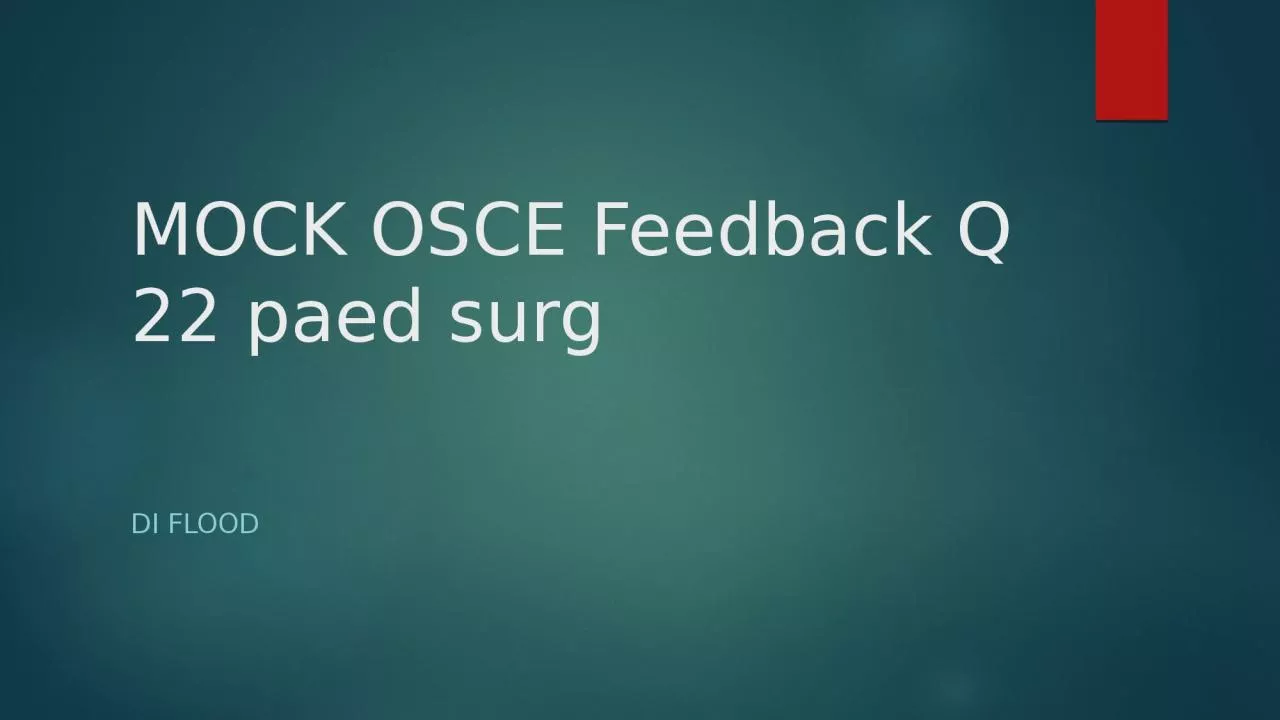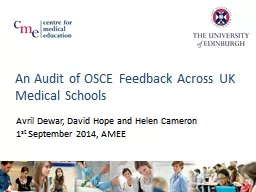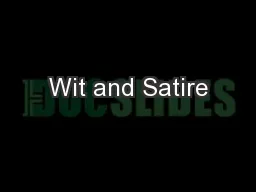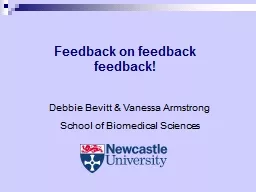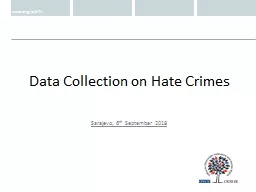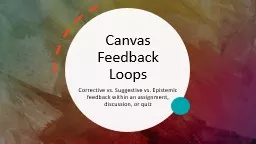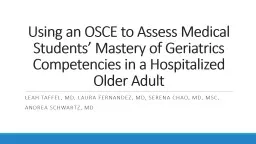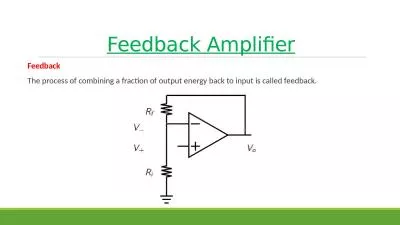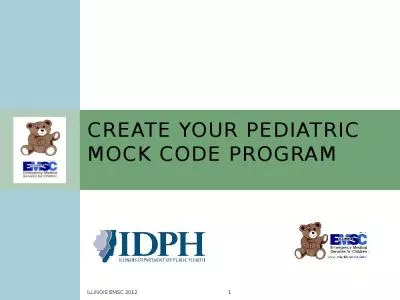PPT-MOCK OSCE Feedback Q 22
Author : SimplySweet | Published Date : 2022-08-03
paed surg Di Flood Marking Pass mark 8 from 12 65 candidates 4 did not answer Overall 38 passed from 65 candidates 58 pass rate 62 of those that attempted Main
Presentation Embed Code
Download Presentation
Download Presentation The PPT/PDF document "MOCK OSCE Feedback Q 22" is the property of its rightful owner. Permission is granted to download and print the materials on this website for personal, non-commercial use only, and to display it on your personal computer provided you do not modify the materials and that you retain all copyright notices contained in the materials. By downloading content from our website, you accept the terms of this agreement.
MOCK OSCE Feedback Q 22: Transcript
Download Rules Of Document
"MOCK OSCE Feedback Q 22"The content belongs to its owner. You may download and print it for personal use, without modification, and keep all copyright notices. By downloading, you agree to these terms.
Related Documents

